Wildlife Photographer of the Year Brent Stirton documents the deadly rhino horn trade
More photos from Brent Stirton's hard-hitting investigation into the crisis caused by a thriving market for rhino horn.
On Tuesday 17 October 2017, Getty Images Special Correspondent Photographer Brent Stirton was named Wildlife Photographer of the Year for his graphic image of a black rhino that had been shot and brutally butchered by poachers. Now, IBTimes UK publishes more of his hard-hitting project, The Deadly Rhino Horn Trade, investigating the crisis caused by a thriving market for rhino horn, for which he was also awarded first place in the Wildlife Photojournalist Award: Photo Story category.
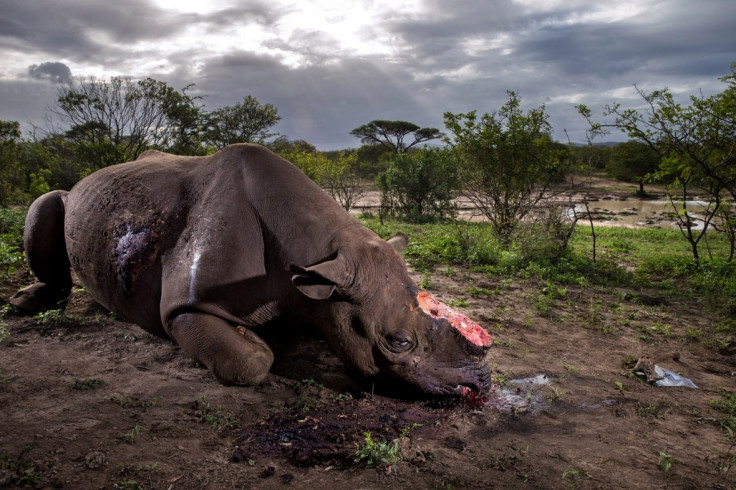
The black rhino bull had been dead for around 24 hours when Stirton photographed it. The poachers are thought to have come from a local community approximately five kilometres away from the Hluhluwe Umfolozi Game Reserve. They entered the park illegally and shot the rhino at a water hole with a high-powered, silenced hunting rifle. An autopsy and postmortem later revealed that the large calibre bullet went straight through this rhino, causing massive tissue damage. It was noted that he did not die immediately but ran a short distance and then fell to his knees. A coup de grace shot was administered to the head from close range. The poachers then hacked off its horns and fled, leaving the endangered animal's carcass.
Black rhinos are critically endangered – the International Union for Conservation of Nature (IUCN) estimates their population has declined by 97.6% since 1960, mainly due to international trade in rhino horn. The horns are used in traditional medicine in countries like South Korea, China and Vietnam, where it seen as a cure for everything from cancer to kidney stones. There is no scientific evidence to suggest rhino horn has any medicinal qualities. It is made of keratin, the same protein that makes up human fingernails and hair. It grows from the skin and is not part of the rhino's skeleton.
The use of horn dates back more than 2,000 years but the recent economic rise of Asia – and the subsequent wealth of the new upper class – has had disastrous effects on the world's remaining rhino population. Rhino horn is now worth more than gold and the poaching crisis is a direct consequence of that rising value.
South Africa, the main repository of the world's remaining rhino, has around 20,000 rhinos and lost an estimated 1,600 in 2016 – a figure that has risen every year since 2006, when fewer than 20 animals were killed for their horns.
Stirton documented the poaching crisis along the Mozambique/South African border, where daily incursions by armed poachers has resulted in a war in Kruger National Park, the largest reserve for rhino in the world. Poaching is rampant in Mozambique – rhino were recently declared officially extinct in the country. The average life expectancy for a rhino that wanders over the border from Kruger into Sabie Game Park on the Mozambique side is just 24 hours.
Sabie has begun working with IAPF, the International Anti-Poaching Foundation, an NGO dedicated to rhino protection. Thanks to their efforts rhino numbers have started to grow. On one day, Stirton spotted 11 rhino: one mature bull, two young bulls and four calf and cow combinations.
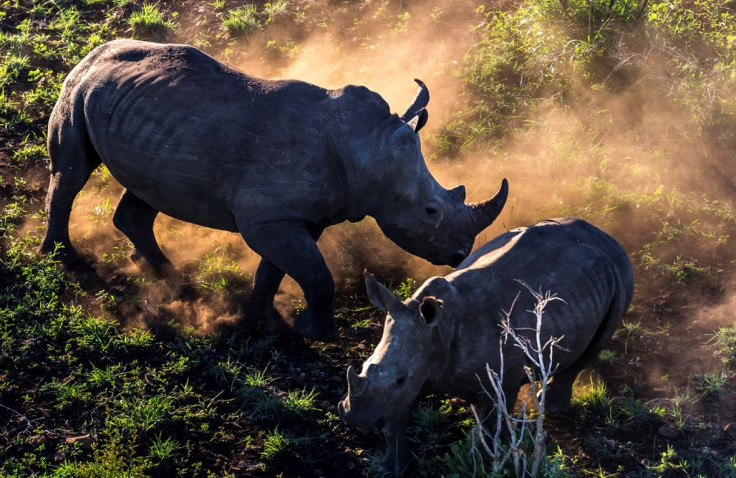
All around South Africa, rhino owners are struggling to provide security for their animals. The price is too high and as a result many are selling their rhino cheaply and those rhino are being transported to more secure facilities around the country. Stirton visited Ezulu Game Farm in KwaZulu-Natal, where six rhino had been killed in the previous three months, prompting the owners to send their remaining animals somewhere safer.
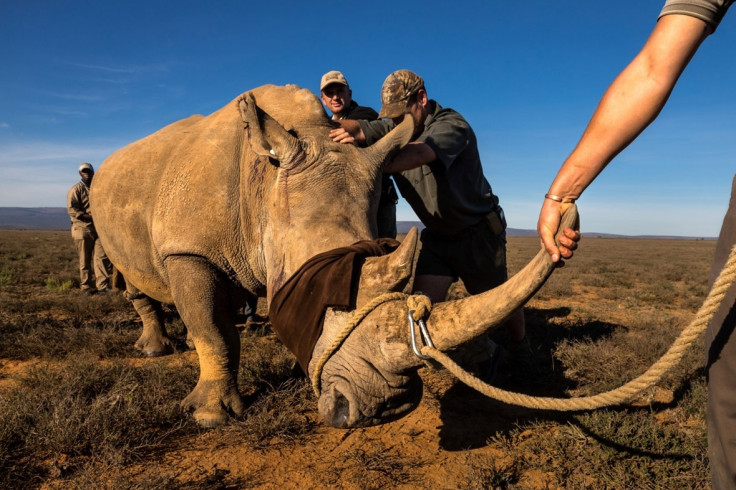
Stirton visited the ranch of John Hume, the world's largest private rhino owner. He spends more than £150,000 a month on security alone for 1,500 rhino, many of which were transported to his ranch from other farms.
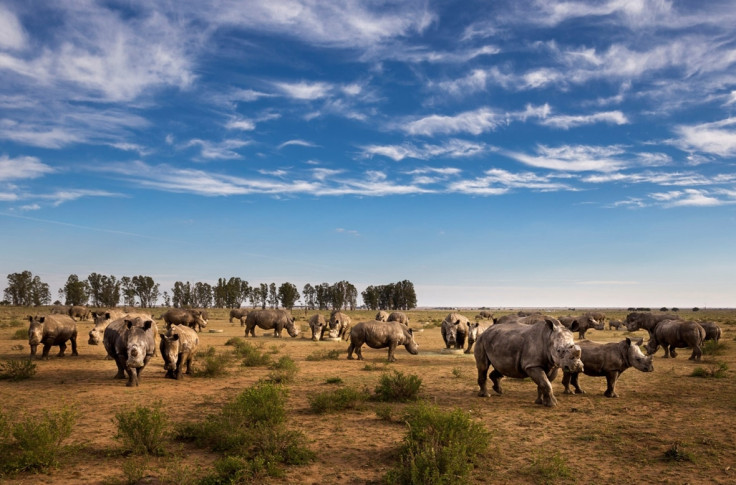
All of the rhino at Hume's ranch are routinely dehorned for anti-poaching purposes. A humane length of 110 millimetres is left to ensure no damage is done to the tissue at the base of the horn. Rhino horn typically grows back at a rate of a kilogram a year on an adult rhino. The removed horn is microchipped, catalogued, registered with the Nature Conservation Authorities and held in a secure off-site facility.
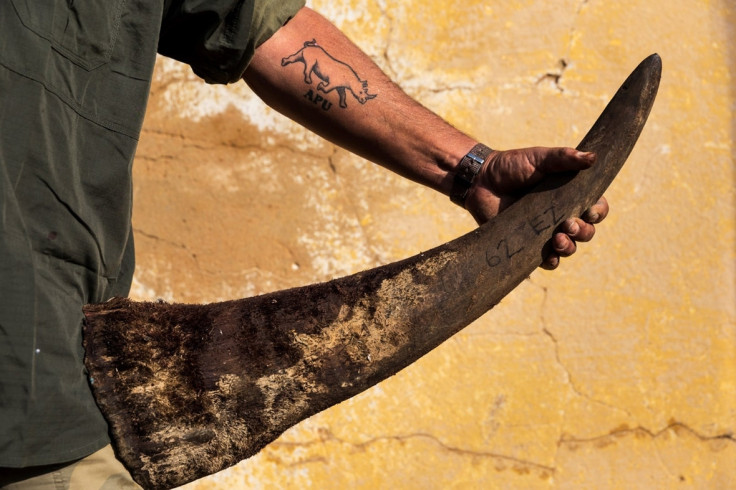
Hume is gambling on legalisation of the international rhino horn trade. He is reputed to have more than five tons of rhino horn in secure locations. This would be worth around $40 million on the Asian market at current prices. There are many supporters of the pro-trade agreement, with more than 1,300 rhino likely to be poached per annum in this current crisis. Critics of trade state that legalising horn trade would create loopholes that would exacerbate the killing of rhino.
Stirton photographed the huge stockpiles of rhino horn the Namibian government would like to sell on the open market. CITES recently voted against the legal sale of rhino horn but powerful lobbies in Namibia, South Africa and Swaziland continue to push to legalise. There are powerful arguments on both sides but what remains clear is the lack of a functional central authority to police this potential trade.
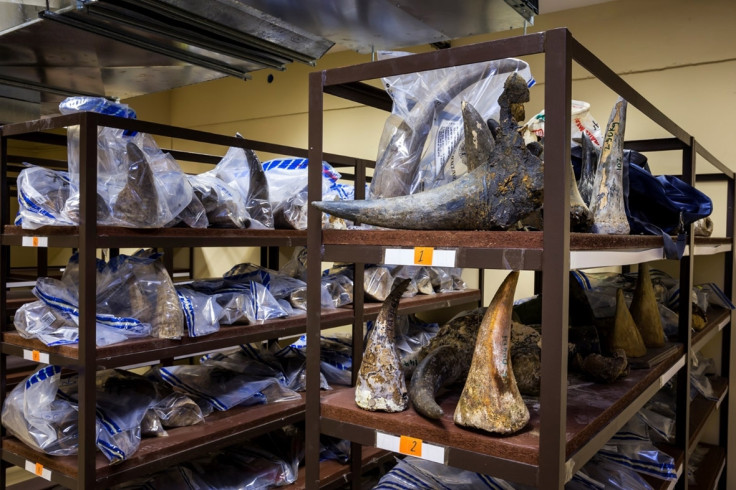
Efforts are being made to save the remaining rhino in the wild. Stirton visited Care for Wild Africa, a donor-run NGO that specialises in caring for wounded animals. They have a special focus on rhino and have taken in many rhino orphans from the poaching wars across South Africa. Many of their rhino are small calves whose mothers were killed by poachers. Sometimes poachers attack the calves as well – wounds from machetes across the spinal area are common as poachers try to break their spines so they cannot run away.
Stirton photographed a calf named Lulah, whose mother was killed in Kruger National Park. When the rangers found Lulah she was estimated to be one month old and had been attacked by hyenas. They had chewed off her ears, parts of her nose and inflicted a terrible bite on her rear right leg. Lulah has a full time caregiver Dorota Ladosz, 25, who lives with Lulah, sleeping with her in her enclosure at Care for Wild Africa. She maintains a constant watch on Lulah's injuries and her temperature and feeds her at regular intervals.

You can help care for wounded rhinos and orphaned calves like Lulah by giving a donation to Care for Wild Africa
Brent Stirton is an award-winning South African-born photojournalist, now based in LA, who has an extensive history in the documentary world. His work has been published by National Geographic, TIME and The New York Times Magazine, and he also is a long-time photographer for the World Wildlife Fund, with his work featuring in campaigns on sustainability and the environment.






















